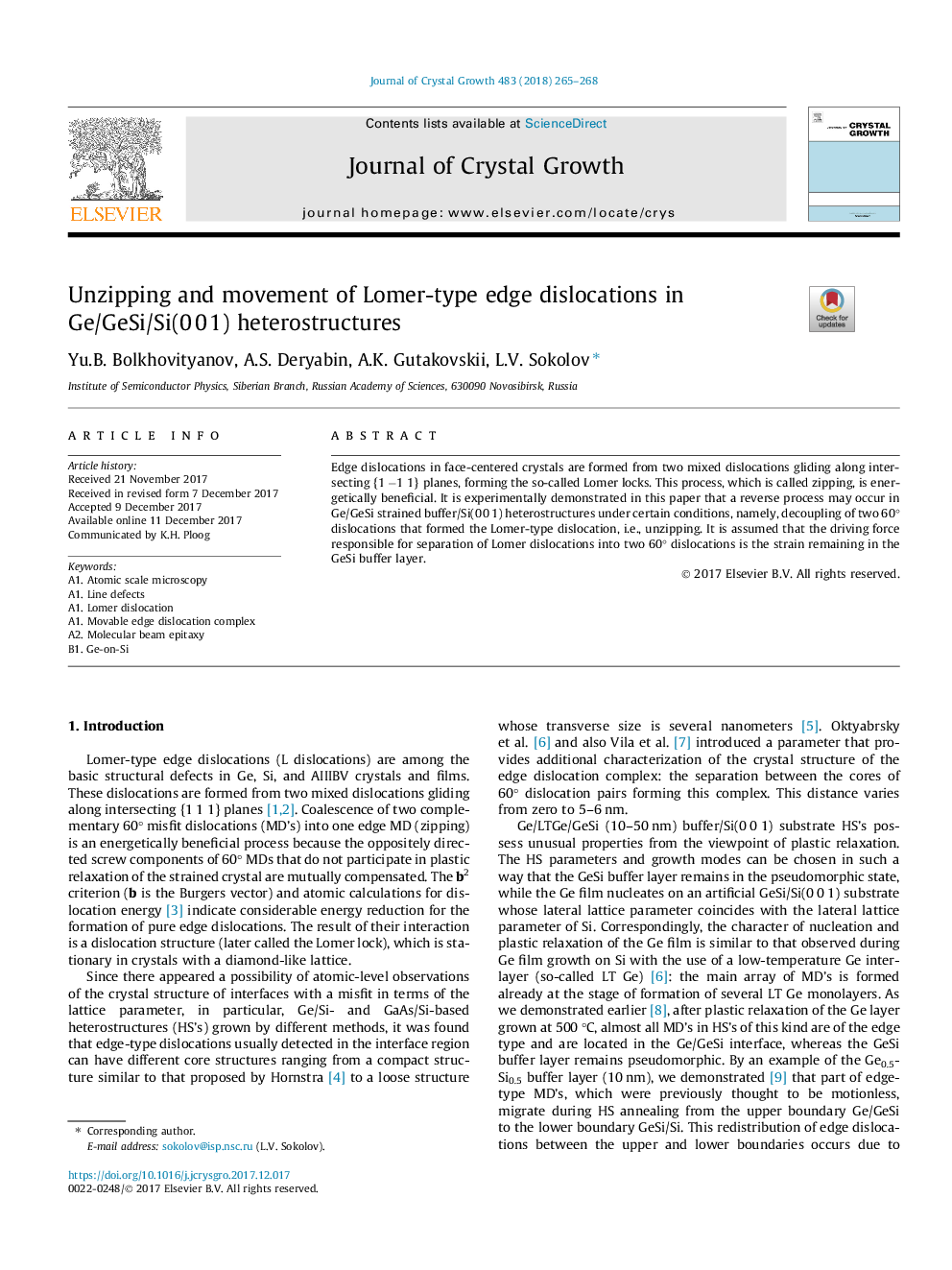| Article ID | Journal | Published Year | Pages | File Type |
|---|---|---|---|---|
| 8148891 | Journal of Crystal Growth | 2018 | 4 Pages |
Abstract
Edge dislocations in face-centered crystals are formed from two mixed dislocations gliding along intersecting {1â¯â1â¯1} planes, forming the so-called Lomer locks. This process, which is called zipping, is energetically beneficial. It is experimentally demonstrated in this paper that a reverse process may occur in Ge/GeSi strained buffer/Si(0 0 1) heterostructures under certain conditions, namely, decoupling of two 60° dislocations that formed the Lomer-type dislocation, i.e., unzipping. It is assumed that the driving force responsible for separation of Lomer dislocations into two 60° dislocations is the strain remaining in the GeSi buffer layer.
Related Topics
Physical Sciences and Engineering
Physics and Astronomy
Condensed Matter Physics
Authors
Yu.B. Bolkhovityanov, A.S. Deryabin, A.K. Gutakovskii, L.V. Sokolov,
